Description
In the unforgiving realm of safety-critical automation, where a momentary lapse in interlock logic can escalate from minor anomaly to full-scale shutdown—jeopardizing personnel, assets, and production quotas—engineers confront the tightrope of embedding certified safeguards into flexible control frameworks without bloating system footprints or inviting compliance headaches. The GE 8851-LC-MT arrives as a compact SafetyNet controller from GE Fanuc’s lineup, precision-engineered to infuse SIL 2-rated decision-making directly into process control loops, tackling the demand for high reliability in I/O signal handling amid volatile industrial settings. Envision a batch chemical reactor: pressure transducers and solenoid valves pulse vital status updates, but absent a dedicated safety overseer, those signals risk misinterpretation amid noise or faults, potentially delaying emergency purges and amplifying exposure risks. This controller neutralizes that by orchestrating up to 64 I/O modules in a daisy-chain topology, executing predefined safety routines like permissive checks or e-stops with deterministic timing, all while maintaining seamless dialogue with host PLCs. It’s a cornerstone in modular integration scenarios, such as retrofitting legacy DCS panels for enhanced fault tolerance or scaling distributed nodes in conveyor systems prone to jams and overloads. By aligning with the engineer’s focus on system stability, the GE 8851-LC-MT demystifies safety layering, permitting teams to fortify automation architectures without proprietary overhauls or extended validation cycles. In packaging lines, it asserts itself during high-speed indexing, validating position sensors to avert collisions under dusty, vibratory strains. This isn’t just a controller insertion; it’s a bulwark against fragility, slashing the diagnostic voids that undermine MTTR in regulated domains. For professionals scoping solutions in safety PLC ecosystems, the GE 8851-LC-MT harmonizes because it blends certifiable performance with I/O extensibility, forging a pragmatic bridge to robust process control that satisfies IEC 61508 without derailing budgets. Whether shoring up a single skid or networking a factory floor, it endows operations with the assurance to pivot from reactive fixes to preemptive poise.
The GE 8851-LC-MT operates as the nerve center of a SafetyNet node, a rack-mountable brain that polls and arbitrates I/O from remote modules over a shielded, fiber-optic backbone, ensuring fault-secure propagation in the automation stack. Mount it in a standard 19-inch frame alongside a PACSystems host, and it engages: a 12 V DC core powers logic scans at 1 ms intervals, ingesting discrete and analog payloads from up to 64 downstream units—think safety-rated switches or 4-20 mA loops—then applying ladder or function-block programs to derive outputs like relay drives or alarm latches. Positioned parallel to the main control layer yet insulated via dual-channel redundancy, it intercepts hazards before they reach the enterprise bus, vetoing unsafe states through de-energize-to-trip principles that align with SIL mandates. In multi-drop configurations, it synchronizes clocks across the chain for sequence-of-events logging, mitigating drift that plagues serial overlays, while diagnostics pulse via Modbus queries or front-panel LEDs to surface module faults or comms timeouts. Integrate it with GE’s VersaMax I/O carriers or third-party gateways in the enclosure, and it enriches the RX3i controller’s worldview with vetted safety data, supporting protocols like Profibus DP for handoffs to SCADA tiers. Its intuitive edge lies in the no-frills programming; GE’s Proficy Machine Edition maps safety blocks without custom toolchains, condensing certification testing from marathons to sprints. For hybrid plants fusing Ethernet and legacy RS-485, the unit’s protocol converters enforce isolation, staunching error cascades from mismatched baud rates. Broadly, it cements a bifurcated hierarchy—safety perimeter for vetoes, core for optimization, apex for oversight—nurturing hybrid grids that adapt from isolated machines to synchronized halls. This orchestration not only expedites anomaly isolation but also accommodates hot-swappable modules, tuning to intensifying uptime edicts.
- 8851-LC-MT
| Specification | Details |
|---|---|
| Model Number | 8851-LC-MT |
| Brand | GE Fanuc (General Electric) |
| Type | SafetyNet Controller |
| Input Voltage | 12 V DC |
| Operating Temp Range | 0°C to 60°C |
| Mounting Style | 19-inch rack-mount |
| Dimensions | 440 mm × 200 mm × 100 mm (approx.) |
| Weight | 1.08 lbs (0.49 kg) |
| Interface/Bus | Fiber-optic SafetyNet bus; Modbus |
| Compliance | SIL 2 (IEC 61508) |
| Supported Protocols | Profibus DP, Modbus RTU |
| Typical Power Draw | 10 W |
Deploying the GE 8851-LC-MT instills a profound sense of operational armor, as its SIL 2 architecture—honed for de-energize safety—sustains interlock fidelity through electromagnetic barrages or power flickers, envisioning a steel mill where roll-gap sensors trigger halts sans hesitation, preserving throughput by averting jams that idle lines for hours. This dependability cascades into prognostic advantages; by timestamping events with microsecond granularity, it populates historians with traceable narratives, enabling root-cause forensics that defer escalations from faults to forecasts, frequently elongating MTBF by factors in cyclic ops. Commissioning strains subside markedly, courtesy of its chain-ready bus that daisy-chains modules sans star-wired spaghetti, embedding new safeguards into commissioned loops with a firmware sync over USB rather than a panel purge.
Reliability’s rhythm endures, with redundant scan paths that mask fiber nicks or module dropouts in under a cycle, anchoring e-stop latencies below 20 ms even as node counts climb—essential for assembly cells juggling AGVs where sync slips spell pileups. Stewardship simplifies to strategic glances; self-tests relay anomaly codes to HMIs, unearthing a drifted contact in moments versus exhaustive loops, potentially curtailing field interventions by 30% in dispersed floors. Crafted for continuity with conformal coatings and thermal margins, it commits to variance-free vigils that eclipse uncertified proxies, embedding value in longevity amid fiscal flux. For tacticians plotting evolutions, its I/O scalability eases node proliferation, insulating from decrees like augmented hazard modeling without foundational fractures. In core, the GE 8851-LC-MT redefines safety orchestration from obligation to opportunity, apportioning the precision and pliancy that propel automation enclaves from fortified to forward-leaning.
The GE 8851-LC-MT embeds deeply in discrete manufacturing like automotive press shops, where it governs die-clamp interlocks and light curtains to enforce zone exclusions, bolstering critical system uptime amid hydraulic thumps and weld-spatter haze that probe signal edges. In these process control environments, its bus chaining manages 32+ inputs for rapid fault propagation, forestalling crushes that halt bays for shifts. Pharmaceutical filling suites mark a staple arena, with the GE 8851-LC-MT sequencing vial diverters and pressure reliefs under cleanroom sterility and batch variances, where continuous uptime safeguards GMP traceability against containment breaches. Here, SIL 2 vetoes quarantine anomalies from sterile flows, upholding I/O signal high reliability for audit-proof runs. Oilfield drilling rigs seal the trio, the controller in mud-pump safeguards monitoring torque and flow against blowout precursors in saline gales and seismic rumbles, facilitating remote overrides that trim rig-time losses. Across these used in power plants and process control environments—though tailored beyond utilities—it subdues harsh conditions, elevating high reliability for sectors staking claims on zero-incident horizons.
IC695CPU001 – High-performance PACSystems CPU for non-safety hosts interfacing with SafetyNet nodes.
8851-LC-ST – Single-thread variant for lighter SIL 2 apps with reduced I/O scaling.
IC694ALG392 – Analog input module that extends SafetyNet chains for transducer integration.
IC693MDM501 – Digital output module complementing 8851 controllers in safety loops.
8851-RC-MT – Rackmount chassis upgrade for denser SafetyNet deployments.
IC695ACC402 – Power supply unit ensuring stable 12 V feeds to MT-series controllers.
IC694BEM301 – Backplane extender for hybrid SafetyNet/PACSystems racks.
As you ready the GE 8851-LC-MT for chassis insertion, inspect bus fiber terminations—LC connectors demand polish-free faces to dodge dB losses that fragment scans; a visual scope or OTDR sweep confirms integrity below 2 dB/km. Gauge slot ventilation too; enclosures shy of 5 cm gaps foster hotspots in I/O-heavy chains, warranting baffle kits to sustain scan rates sans throttling. Program alignment is paramount—benchmark the ladder against Proficy’s SIL library pre-load to avert veto mismatches that stall handshakes with the host. Upkeep orbits efficiency: trimestral fiber continuity tests with a light meter expose attenuation in coiled runs, vital in EMI-saturated bays; drifts past 1 dB prompt cleaves and recrimps to reclaim pulse fidelity. Annual proof-tests, emulating e-stop cascades via dry contacts, assay response curves without process pauses—benchmark latencies exceeding 15 ms to recalibrate timers proactively. In particulate-heavy zones, enclosure seals merit monthly audits; breaches inviting grit on logic pins invite intermittent vetoes. These measures, forged from safety audits, perpetuate the controller’s mandate, easing your oversight to evolution over endurance.

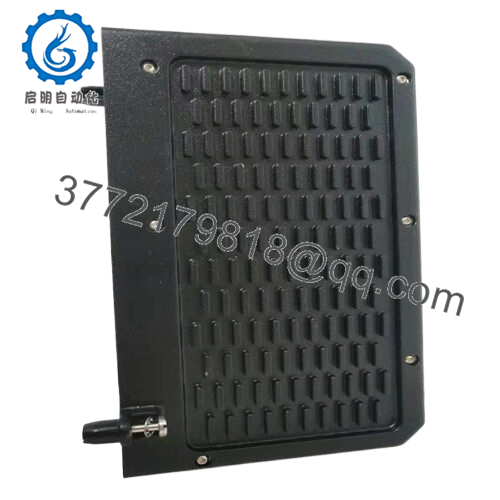
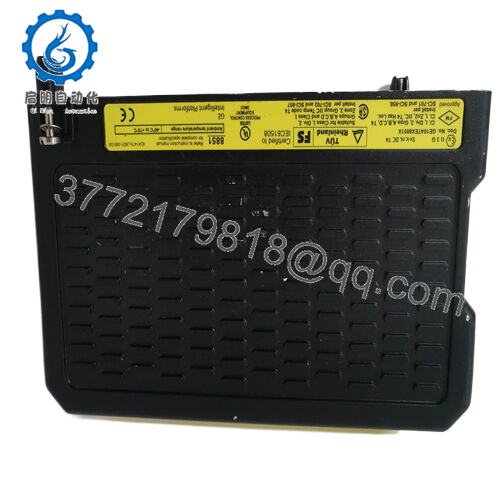
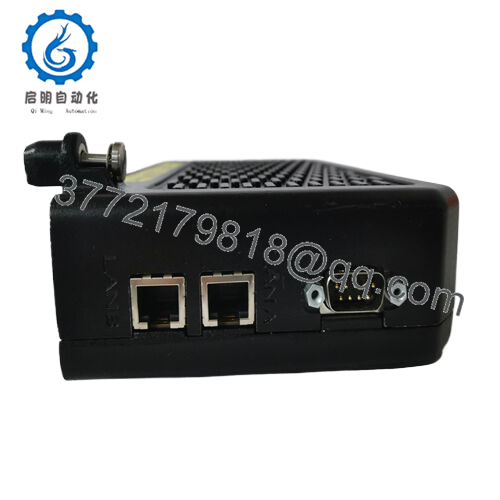
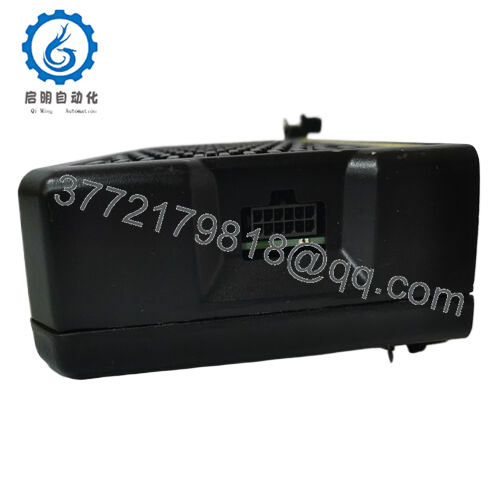
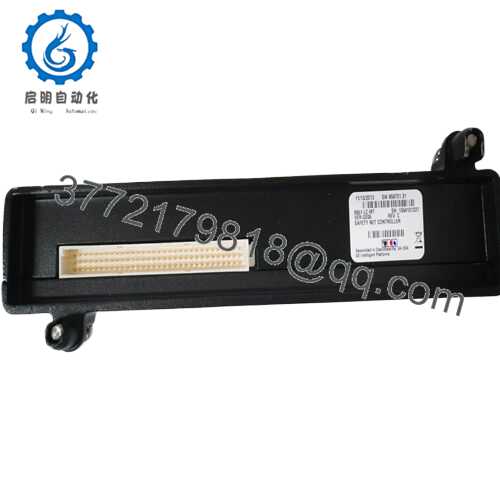
 WhatsApp: +86 16626708626
WhatsApp: +86 16626708626 Email:
Email:  Phone: +86 16626708626
Phone: +86 16626708626


